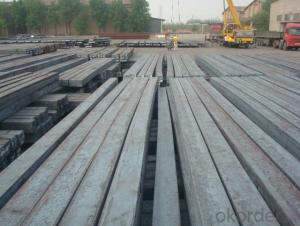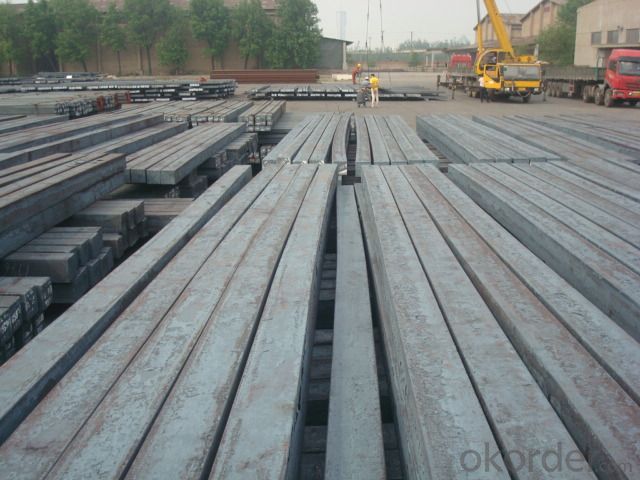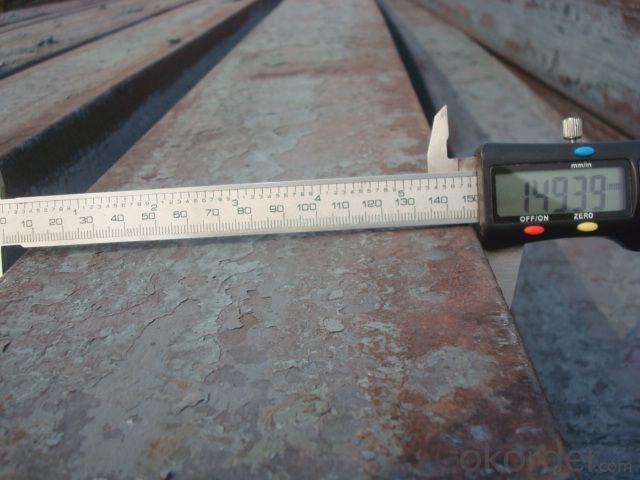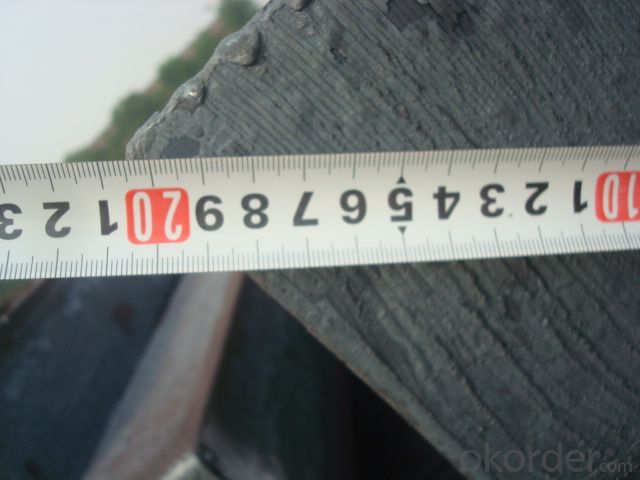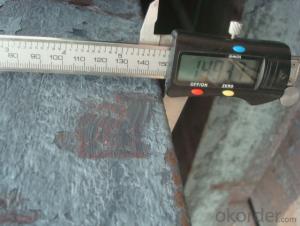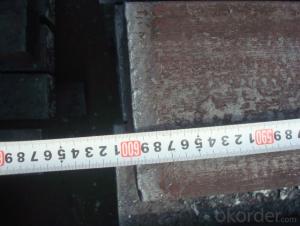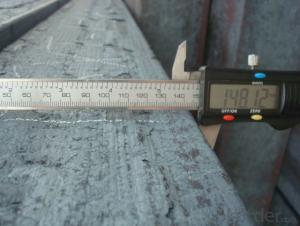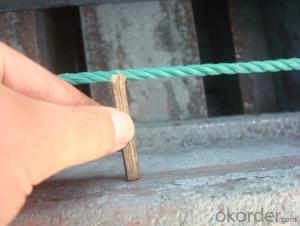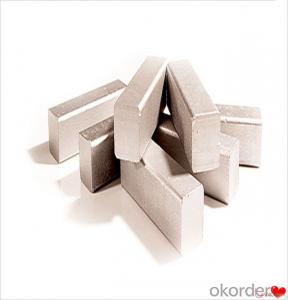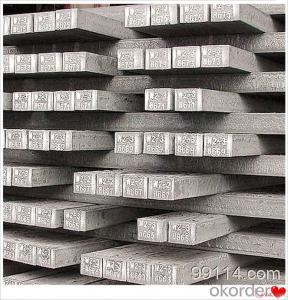Prime Steel Billet Q275, 20MnSi, 5SP,Q235 for good sale
- Loading Port:
- Tianjin
- Payment Terms:
- TT OR LC
- Min Order Qty:
- 1000 m.t.
- Supply Capability:
- 20000 m.t./month
OKorder Service Pledge
OKorder Financial Service
You Might Also Like
STEEL BILLET
1.Brief description
Steel billet(ingot) by cogging or breakdown of semi-finished products, is the raw material of all kinds of steel mill. Billet section of square, round, flat, rectangular and abnormity of several kinds of, mainly related to the shape of rolled products.
2.Features
Rectangular billet continuous casting billet and mainly general carbon steel, low carbon low silicon cold-rolled material, high quality carbon structural steel, high strength low alloy steel, special steel, etc.
The billet is mainly divided into two kinds from the shape:
Slab: cross section width and height of the ratio of the larger, mainly used for rolling plate.
Billet: equal cross section width and height, or a huge difference, mainly used for rolling steel, wire rod. ,
Steel billets have distinct characteristics as compared with already furnished steel bars and products. Billets have a specific grain structure, which enables the metal to be processed more intricately. Steel billets are also known for their malleability and ductility, especially when exposed to varying temperatures during shaping and molding.
3.Processing
Steel billets are considered fresh and raw, and they must undergo a series of manufacturing processes before they can be used for various purposes. Billets are made by means of freezing molten liquid, and are later exposed to extremely low temperatures in order to allow the metal to take shape and solidify in chemical structure. The temperature manipulates the metal's physical properties, and tones its strength and durability. The subsequent processes provide the metal's curved mold design so that it can fit the allotted space provided by other machines, which complete the finishing procedures.
4.Pictures
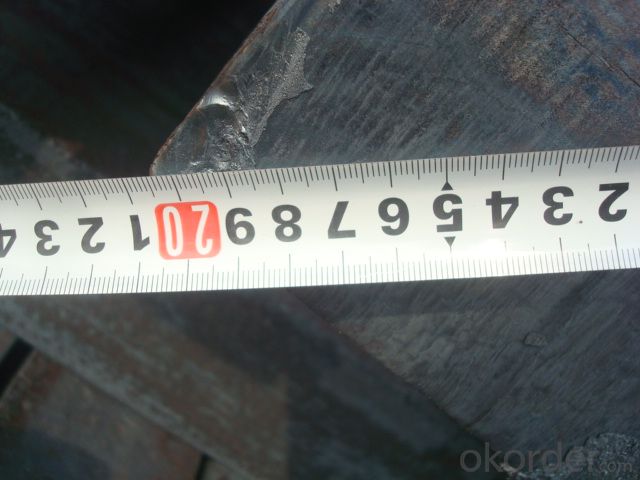
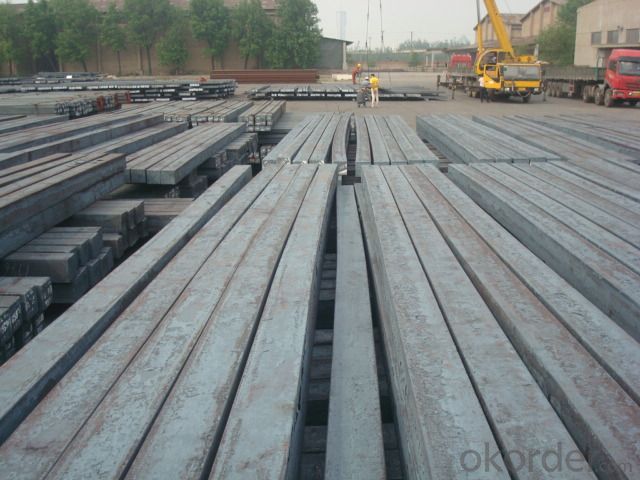
5.Usage
Billets, or ingots (as they sometimes referred to), are not of practical use until they have been formed into more functional shapes and sizes. While they have already been put in the furnace, they still require a series of shaping and molding procedures such as hot and cold working, milling and cutting before they are sold in hardware stores, or used for different applications. The unformed billets, however, can be used in striking currency such as coins and as reserves, similar to gold bars.
6.Detailed specification
Hot rolled billet steel
Size: 50x50mm-180x180mm
Steel Grade: 3SP, 5SP,Q195,Q235,Q255,Q275 Length:3m-12m
MOQ: 1000MT/size
Payment term: TT or LC
Packing: in bulk , bundle
Shipment: by container , bulk vessel
Packaging Details: bundles with steel strips or as customers's requirements
Delivery time: 15-30 days after the deposit
Loading port:Tianjin, or other port China
Origin : China
Inspection:Third party inspection before loading.
- Q: What is the typical tensile strength of a steel billet?
- The typical tensile strength of a steel billet can vary depending on factors such as the specific grade of steel and the manufacturing process. However, on average, steel billets typically have a tensile strength ranging from 400 to 600 megapascals (MPa).
- Q: How is the market for steel billets influenced by global economic trends?
- Global economic trends have a significant impact on the market for steel billets. Steel is a crucial raw material for industries like construction, automotive, and manufacturing, so any changes in the global economy can greatly affect the demand and pricing of steel billets. During periods of economic growth, there is typically an increased demand for steel products, including steel billets. This is because there are more construction projects and infrastructure development happening during these times. The demand is driven by increased consumer spending, urbanization, and government investments in infrastructure. Therefore, factors like GDP growth, industrial production, and construction activity are vital in determining the demand for steel billets. On the other hand, during economic downturns or recessions, the demand for steel billets tends to decrease. This is due to reduced consumer spending, fewer construction projects, and a slowdown in manufacturing. Global economic indicators, such as GDP contraction, industrial output decline, and reduced infrastructure investment, can negatively impact the market for steel billets. In addition to economic trends, global trade policies and tensions also influence the market for steel billets. Tariffs, quotas, and trade disputes between countries can disrupt the supply chain of steel billets, leading to price volatility and market uncertainty. Measures to protect domestic industries or restrictions on steel imports can limit the availability of steel billets in certain regions, affecting market dynamics and pricing. Currency exchange rates also play a role in the steel billet market. Fluctuations in currency values can affect the competitiveness of steel billet exports and imports. A strong domestic currency may make exports more expensive, reducing foreign demand for steel billets. Conversely, a weak currency may make imports more expensive, potentially increasing demand for domestically produced steel billets. In conclusion, the market for steel billets is closely tied to global economic trends. Economic growth, industrial production, construction activity, trade policies, and currency exchange rates all impact the demand, supply, and pricing of steel billets. Understanding and monitoring these global economic trends is essential for stakeholders in the steel industry to make informed decisions and navigate market fluctuations effectively.
- Q: What are the main characteristics of high-quality steel billets?
- The main characteristics of high-quality steel billets include a uniform and consistent composition, precise dimensions, minimal surface defects, high strength, excellent ductility, and good machinability. Additionally, they should have a smooth surface finish, low levels of impurities, and be free from cracks or internal voids. These characteristics ensure that the steel billets can be efficiently and reliably processed into various products, with superior mechanical properties and enhanced performance.
- Q: What are the different grades of steel used for making billets?
- Making billets requires the use of various grades of steel. The selection of steel depends on the intended purpose of the billet and the desired characteristics it should possess. Carbon steel is a commonly utilized grade for billet production. It is a versatile and cost-effective option, providing good strength and hardness. This grade finds extensive use in applications where high strength is crucial, particularly in the construction sector. Another frequently employed grade for billet manufacturing is alloy steel. By incorporating different alloying elements like chromium, nickel, or molybdenum into carbon steel, the resulting alloy steel exhibits enhanced strength, toughness, and resistance to corrosion. Hence, alloy steel is suitable for a wide range of applications, including automotive parts, machinery components, and tooling. Stainless steel is another grade commonly employed for billet production. With a minimum chromium content of 10.5%, stainless steel offers excellent resistance to corrosion. Industries requiring oxidation and corrosion resistance, such as the food and beverage industry, medical equipment manufacturing, and architectural applications, often employ stainless steel in billet production. Moreover, specialized grades of steel cater to specific applications. For instance, high-speed steel (HSS) is ideal for billets used in cutting tools due to its exceptional hardness and heat resistance. Tool steel is another specialized grade used to manufacture billets for tools and dies, offering high hardness, wear resistance, and toughness. To summarize, the grades of steel commonly used for making billets include carbon steel, alloy steel, stainless steel, high-speed steel, and tool steel. The choice of grade hinges upon the specific requirements of the application, such as strength, toughness, corrosion resistance, or specialized properties needed for cutting tools or tooling.
- Q: How are steel billets used in the production of axles?
- Steel billets are an indispensable element when manufacturing axles, as they serve as the raw material for their production. The initial step in the production process involves heating the steel billets to a specific temperature, which enhances their malleability. This heating process, known as forging or hot rolling, enables the billets to be molded and manipulated into the desired axle shape. Once the billets have reached the appropriate temperature, they are placed in either a forging press or a rolling mill. In the forging process, the billets are subjected to high pressure, resulting in the desired axle shape. This process may involve multiple steps, such as hammering, pressing, or extrusion, to achieve the desired dimensions and shape. Following the forging process, the axle typically undergoes heat treatment to enhance its durability and strength. This involves heating the axle to a specific temperature and then rapidly cooling it through a process called quenching. The heat treatment process aids in improving the axle's hardness and resistance to wear and tear. After the forging and heat treatment processes, the axles may undergo further procedures such as machining, grinding, or finishing. These additional steps are carried out to achieve the required surface finish and dimensional accuracy, ensuring that the axles meet the necessary specifications and can seamlessly integrate into the final product. In conclusion, steel billets play a crucial role in axle production, serving as the starting point for the manufacturing process. They undergo heating, forging, and shaping to create the desired axle form. The resulting axles are then subjected to heat treatment and additional processes to meet specifications. Steel billets are essential for producing top-quality and long-lasting axles, which are critical components in various industries, including automotive, railway, and heavy machinery.
- Q: What is the global production capacity of steel billets?
- Accurately estimating the global production capacity of steel billets proves challenging due to its annual fluctuations and susceptibility to factors like market demand, economic conditions, and technological advancements. Nonetheless, the World Steel Association reports that in 2019, the total global production capacity for steel billets stood at around 1.86 billion metric tons. This capacity is distributed among different countries and steel-producing regions, with China leading as the largest producer, trailed by India, Japan, and the United States. It is crucial to acknowledge that these statistics are subject to alteration as the steel industry evolves and grows.
- Q: How do steel billets contribute to energy efficiency?
- Steel billets contribute to energy efficiency in several ways. Firstly, the production of steel billets typically involves recycling scrap metal, which requires significantly less energy compared to producing steel from raw materials. This recycling process helps conserve energy and reduces the carbon footprint associated with steel production. Additionally, steel billets are often used as a raw material in various industries, such as construction and manufacturing. The durability and strength of steel make it a long-lasting and energy-efficient material for building structures and producing goods. Its high thermal conductivity also allows for efficient heat transfer, making it suitable for applications that require temperature control or energy conservation. Overall, steel billets play a vital role in promoting energy efficiency by minimizing energy consumption during production and offering sustainable solutions in various sectors.
- Q: How do steel billets contribute to the manufacturing of renewable energy equipment?
- Steel billets are an essential component in the manufacturing of renewable energy equipment, such as wind turbines and solar panels. These billets are used to create sturdy and durable structures, including tower bases for wind turbines and frames for solar panels. Additionally, steel billets are crucial in the production of transmission and distribution infrastructure required for renewable energy systems. Their strength and versatility make them an indispensable material in the renewable energy industry, enabling the efficient and reliable generation of green energy.
- Q: What are the common grades of steel used for billets?
- The common grades of steel used for billets include mild steel, carbon steel, and alloy steel.
- Q: How do steel billets contribute to the manufacturing of furniture and fixtures?
- Due to their unique properties, steel billets are indispensable in the production of furniture and fixtures. The strength and stability they offer are essential for constructing these items, providing a solid framework that can support their weight and load-bearing capacity. This ensures that the furniture and fixtures will remain functional for an extended period of time. Additionally, the malleability of steel billets allows for the creation of intricate designs and shapes, enhancing the aesthetic appeal of furniture and fixtures. Manufacturers can take advantage of this flexibility to produce a wide range of styles and patterns that cater to different consumer preferences and interior design themes. Moreover, steel billets can be easily welded, making them perfect for joining various components together during the manufacturing process. This welding capability ensures a seamless and secure construction, ultimately improving the overall quality and durability of the furniture and fixtures. Furthermore, steel billets possess corrosion-resistant properties, making them suitable for indoor and outdoor furniture and fixtures alike. This resistance to rust and decay guarantees that these items can withstand harsh environmental conditions, preserving their appearance and structural integrity over time. In conclusion, the role of steel billets in the manufacturing of furniture and fixtures cannot be overstated. Their strength, malleability, weldability, and corrosion resistance contribute to the durability, design flexibility, and longevity of these items, making them a preferred choice for both manufacturers and consumers.
Send your message to us
Prime Steel Billet Q275, 20MnSi, 5SP,Q235 for good sale
- Loading Port:
- Tianjin
- Payment Terms:
- TT OR LC
- Min Order Qty:
- 1000 m.t.
- Supply Capability:
- 20000 m.t./month
OKorder Service Pledge
OKorder Financial Service
Similar products
Hot products
Hot Searches
Related keywords
